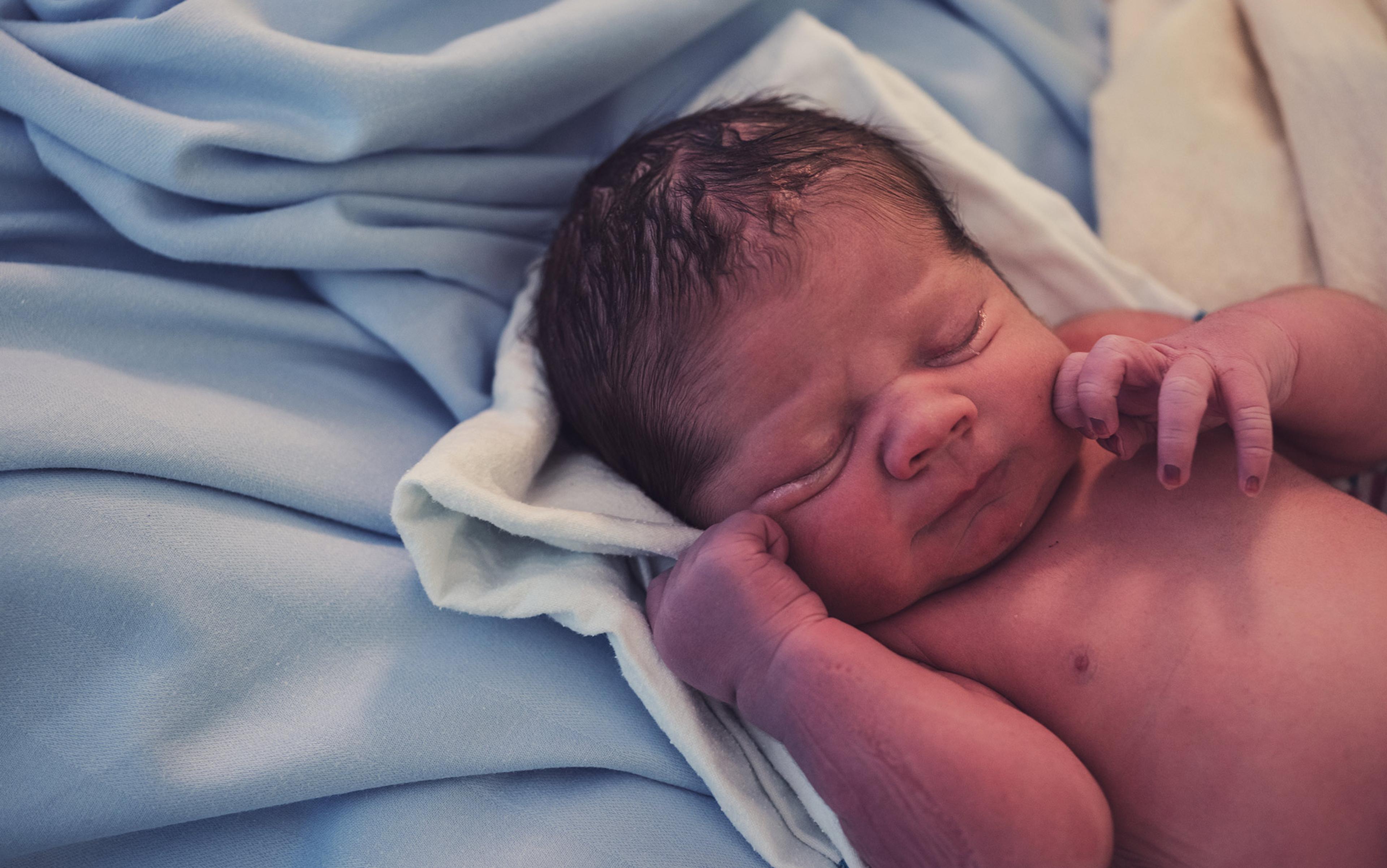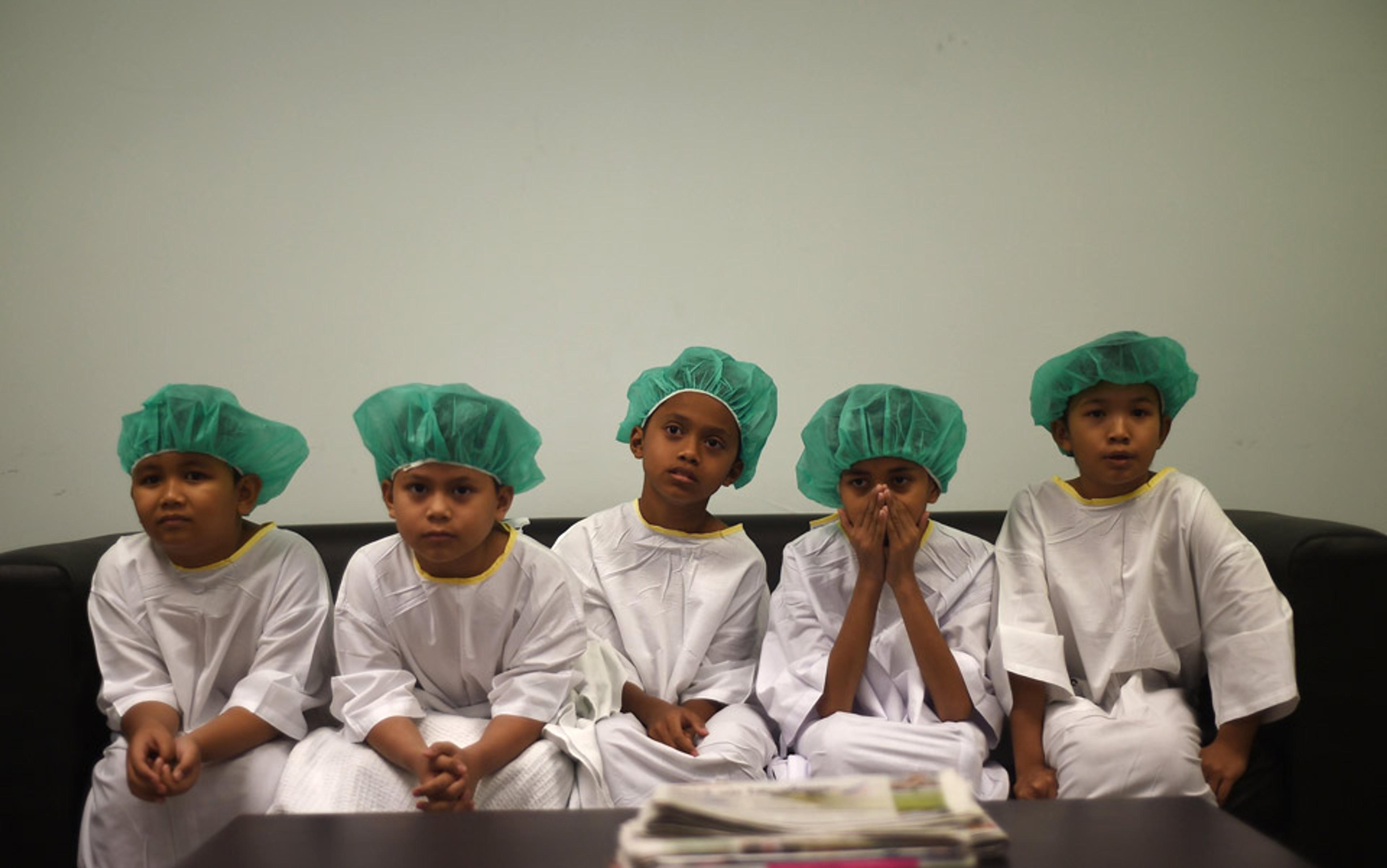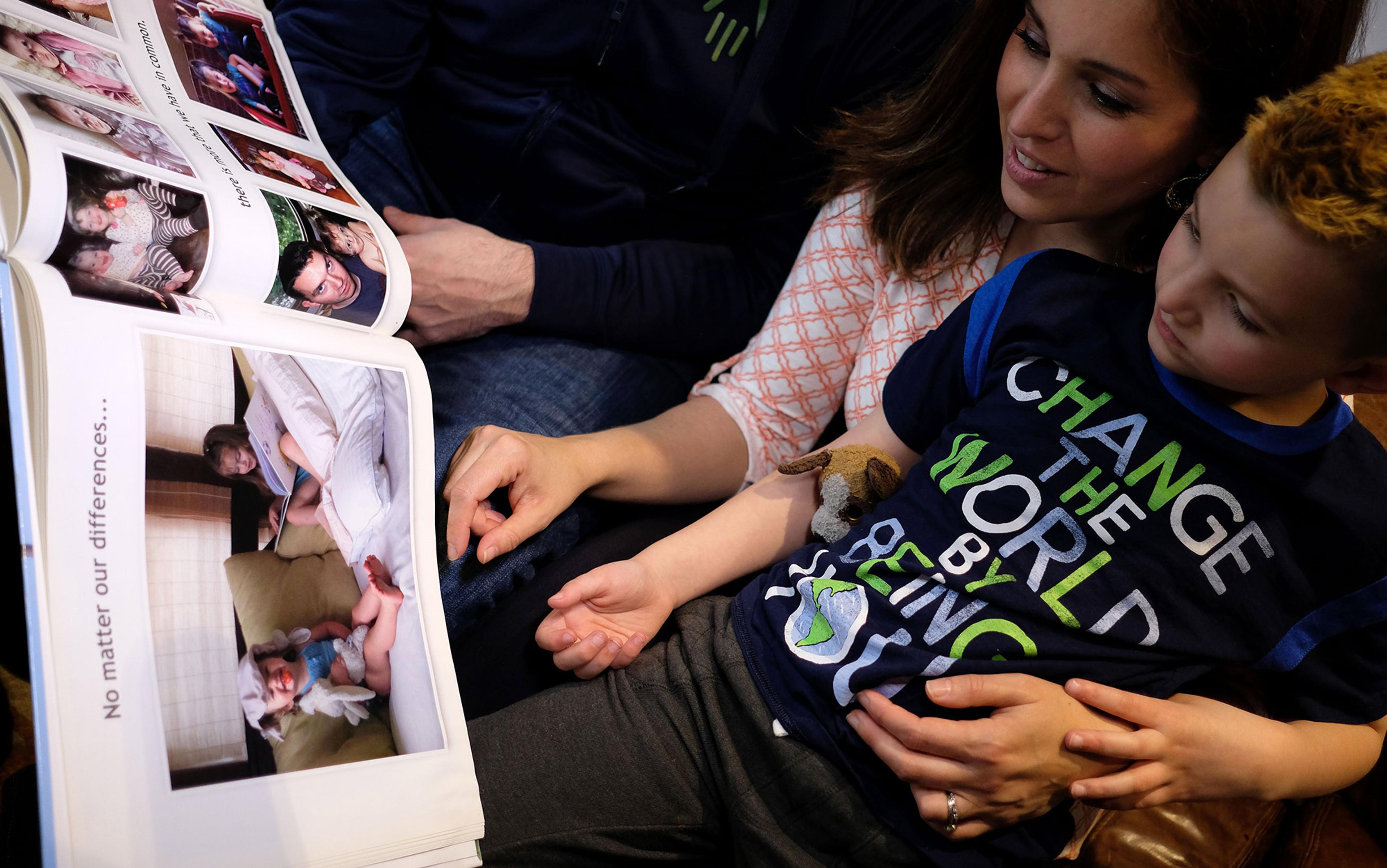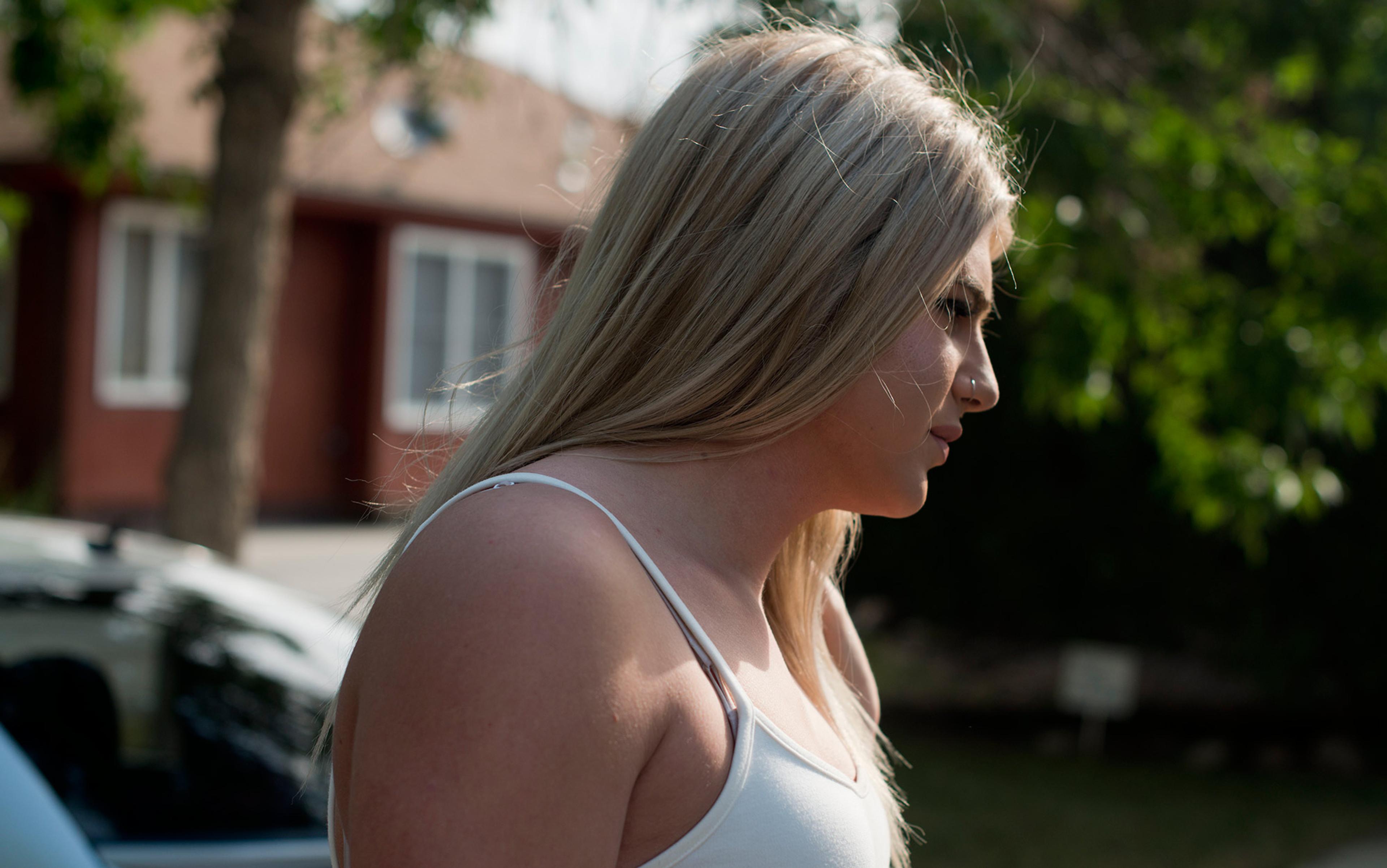People tend to assume that everyone is born simply male or female. But nature shows us otherwise. About one in 2,000 babies is born with genitals roughly halfway between male and female types. Their genitals might include what looks rather like a penis along with what appears to be a vaginal opening. More subtle forms of in-between sex development are much more common than that. In fact, with modern science, we find that as many as one in 100 of us might have some sex-development type other than the standard male or female, although some will never have occasion to find out.
Nevertheless, cultural attachment to the idea of a clear, simple division between (only) two sexes runs deep. Many physicians believe that there’s nothing we can do about that cultural anchor – You can’t change society, they say. So they think that, for the children’s sake, it’s sometimes necessary to do ‘corrective’ surgeries to make children who are born intersex look more typically female or male. Although statistics can be hard to pin down, it appears that in the United States today, at least one in 300 children is born with a difference of sex development (DSD) evident enough to the naked eye that a paediatrician might recommend an expert consultation.
Variations on typical sex development occur most commonly in boys, and most commonly in the form of hypospadias. Hypospadias is a condition in which the urinary opening is not on the very tip of the penis but lower down the head, or on the shaft of the penis, or, more rarely, at its base. Girls can be born with atypical sex development, too. For example, during foetal development, the clitoris might grow larger than average and can sometimes look like a small penis.
Quite simply, these sex variations occur because the typical male and the typical female represent two ends of a developmental continuum. The clitoris and the penis grow from the same proto-organ in development. In the same way, the labia majora and the scrotum grow from the same tissue. Most newborns have developed genitalia at one end of the developmental spectrum or the other. But not everyone.
And genitals are by no means the only component of sex biology that can vary. What we call simply ‘biological sex’ is in fact a many-factored trait involving various hormones, hormone receptors, external genitals, internal reproductive organs, and much more. Consequently, there are dozens of different ways for what we could call ‘intersex’ development to occur.
Some intersex types are not noticeable at birth. This happens, for example, when a baby is born appearing typically male or female, but has some internal organs of the other sex. Some people don’t find out that they have a relatively uncommon form of sex development until they hit puberty and don’t develop according to expectations. Some don’t find out until they are older, when they run into trouble trying to have children and, through medical diagnostics, find out that their sex is more complicated than they expected.
Detecting intersex at a late stage comes with an advantage: it gives the person a chance to be informed and make a choice about whether to change her or his own body. Babies born with genital anomalies usually have the choice made for them. In paediatric medicine, when a child has a visible intersex condition, since at least the 1960s, standard practice around the world has been to surgically change the child’s body to look and function in accord with cultural standards.
Hypospadias ‘repair’ surgery involves moving a boy’s urinary opening to the tip of the penis. It is today so common that paediatric urologists in the US refer to it as a ‘bread and butter’ operation. It’s performed not only because some adults believe that a hypospadic penis looks wrong, but also because they believe that, if you want to grow up to be a normal man, you have to urinate standing up.
Every day, in children’s hospitals around the world, doctors do these and other ‘normalisation’ surgeries. But controversy over them has been steadily increasingly over the past 20 years, and has now reached almost fever pitch. That’s because intersex patients’ rights activists have been effectively reframing paediatric genital ‘normalisation’ surgeries as a violation of human rights. They argue that children should be allowed to grow up and decide for themselves whether to have optional sex-altering surgeries.
Genital ‘fixing’ surgeries might be common, but they are by no means risk-free. Writing to his colleagues in 2015, one leading paediatric urologist admitted: ‘For years we urologists have routinely underestimated the problems our patients have experienced following hypospadias surgery.’ And some surgeries are much more invasive than hypospadias ‘repair’. For example, surgeons have typically dealt with genetic male children born with in-between genitals and internal testes by removing the testes and making the child’s genitals look more female.
This involves removing sections of the child’s phallus to look more like a clitoris. Surgeons of course try to minimise the damage they do to nerve endings and sexual sensation but, inevitably, having portions of the phallus surgically removed and reshaped necessarily changes one’s ultimate experience of sexual sensation. If the testes are also excised, the child loses any future chance at reproduction.
For decades, studies reported whether patients grew up to be brides to men, as if this should be the medical goal of female sexual function
Surgeons have also typically ‘treated’ a genetic female child born with internal female anatomy but external male-type anatomy by removing phallic tissue. They then surgically construct a ‘neo-vagina’. These procedures remain common, even though the medical literature has shown that about 5 per cent of these genetic-female children can grow up to feel they are men. Significantly, there is also a high medical complication rate for neo-vaginas constructed in infants and toddlers, and some forms of ‘vaginoplasty’ can increase the risk of cancer. Again, there is in many cases no urgent medical reason for these surgeries; they’re done out of a belief that the body must fit, as much as possible, into either the male or the female category.
Historically, surgeons have worked to make most visibly intersex children look more female. Why female? As surgeons told their trainees for years: ‘You can poke a hole but you can’t build a pole.’ In other words, it’s difficult surgically to build a convincing penis, but easier to build a convincing hole. The belief is that you must have one or the other, and a female is easier to construct because, in the surgeons’ thinking, she just has to be passively receptive to a penis. For decades, outcomes studies of these surgeries reported whether or not patients grew up to be brides to men, as if this should be the medical goal of female sexual function.
No one advocating for intersex rights disputes that, if a child needs a lifesaving surgery, it should happen. Such surgical interventions are necessary, for example, when a child develops cancerous gonads (the organs that usually form as ovaries or testes). But most intersex surgeries in early childhood do not happen out of medical necessity. They happen because of doctors’ desire to make a child’s genitals look and function in more culturally acceptable ways.
Rather than reducing physical risk to the child, these genital surgeries typically increase physical risk by introducing the potential for complications. Surgeries can go perfectly, from the surgeon’s point of view, but the chance is not insignificant that the patients would later regret these elective sex-altering operations.
Although many think that the intersex controversy is primarily about gender assignment, in fact the great majority of people born with differences of sex development who have become activists are not unhappy about their own birth gender assignments. Rather, they criticise the system because parts of their bodies were cut off or altered; because in some cases medical professionals later lied to them about their histories; and because they were treated as if they were unacceptable when they should have been accepted and accorded the same rights that others enjoy.
Yet doctors who practise these interventions believe that they have the right to do them at the parents’ request. They say – while admitting that they lack supporting evidence – that parents might have trouble bonding with a child whose body looks atypical for a girl or a boy, and that surgery could therefore promote bonding between parents and children.
Advocates of intersex rights want children born with sex development variations simply to have what they should have enjoyed: the right to decide for themselves if they wanted their sex parts changed. If you step back, the right to decide for yourself whether you want your sex parts changed doesn’t sound too radical, does it?
The United Nations Committee Against Torture would agree. It is now investigating intersex surgeries at paediatric hospitals worldwide after being encouraged by intersex rights activists to condemn what many of them call ‘intersex genital mutilation’ (IGM). Markus Bauer and Daniela Truffer of the international group Stop IGM have been effectively pushing the Committee, with other advocates, for recognition of paediatric intersex surgeries as a human-rights abuse.
As a result, the Committee Against Torture has already reprimanded Germany, Switzerland, Austria, Denmark, Hong Kong and France. It has also now formally asked Australia and the US to account for how many such surgeries are happening nationally. The Committee has also asked the US and Australia to ‘indicate which criminal or civil remedies are available for people who have undergone involuntary sterilisation or unnecessary and irreversible medical or surgical treatment’. The US-based legal rights group interACT is supporting these investigations. The US is a signatory to the Convention Against Torture, and a reprimand by this committee would be an embarrassing statement to the world that the US has failed to live up to its obligations. However, there is no enforcement mechanism beyond the reprimand, and the US, like many countries, sometimes fails to live up to the aspirations of the Convention.
A lot of people who ‘get’ that FGM is wrong don’t think clearly or enough about what’s happening to intersex children every day
Having myself been an advocate for the rights of people with intersex for 20 years, I support the work of those pushing to have intersex understood as an issue of human rights. I am not, however, convinced that the term ‘intersex genital mutilation’ is ultimately helpful. For example, I don’t think that it is unreasonable for adults (whether intersex or transgender) to consent to have these surgeries, if they are fully informed of the risks. Therefore, calling the surgeries ‘mutilating’ troubles me.
At the same time, I fully respect why the term ‘IGM’ was chosen, namely to mirror the term ‘FGM’ – female genital mutilation, the practice among some cultures of cutting girls’ genitals to fit social norms. A lot of people who ‘get’ that FGM is wrong don’t think clearly or enough about what’s happening to intersex children every day, and we wish they would.
FGM has been widely condemned as misogynist and barbaric, and has been outlawed in many places. The US, for example, made it illegal in 1996 to perform traditional forms of female genital cutting on individuals under the age of 18. But in most medical systems in the world today, surgically altering a child’s intersex genitals to more closely approximate cultural standards is still considered not only acceptable, but necessary and humane.
In fact, anti-FGM laws (for instance, banning clitoral reduction in children) sometimes describe exactly what happens during certain intersex surgeries. Worldwide, many laws that could protect intersex children are not enforced in their cases. Specialist doctors argue that’s because intersex is special, and therefore properly a matter for ‘parental choice’.
An international group of paediatric urologists – the surgeons for whom these surgeries are a chief specialty – has recently specifically rejected the framing of the UN Committee Against Torture, insisting that these surgeries are necessary for ‘meeting parents’ expectations and helping the individual to achieve future satisfactory sexual function, consistent with their gender identity’.
The claim of these urologists’, however, is predicated on some dubious assumptions. First, it presumes that a doctor can correctly guess what gender identity an intersex infant will ultimately feel themselves to be. Prenatal hormonal exposure does on average influence how adults will ultimately gender-identify – and that helps doctors to guess what gender identity a child will ultimately feel. But we know of plenty of cases where adults have guessed wrong for children.
Taking away sexual tissue from a child who might later want it, predicated on guessing that child’s ultimate gender identification, is very problematic. There are numerous documented cases of intersex adults who were turned into ‘typical’ girls but who grew up to be men. Surgeons took these men’s phallic tissue from them in infancy. Some also had their testes taken away.
Importantly, even if a child does grow up comfortable with the gender assignment given to her, she might not have wanted sexual tissue taken away from her unnecessarily. Yet the urologists’ statement also presumes that typical-looking and typical-functioning genitals are necessary ‘to achieve future satisfactory sexual function’. This is simply not true for everyone.
From my own historical studies of what happened to intersex people before the modern era of surgery – the scholarship that led me to join the intersex rights movement – I can report that many people with intersex genitals achieved what they saw as satisfactory sexual function with no ‘corrective’ surgeries. As surgeries became available, some sought them. But many, recognising that they did not feel the need to risk what worked for them, did not. They were satisfied with their appearance and function.
The urologists’ tendency has been to insist that ‘dissatisfied’ former patients just suffered from surgeries that were not as good as today’s. Yet the fact is that any surgery introduces risk to tissue, and genital tissue is especially delicate. Moreover, to state the obvious, you can’t ever get back tissue that has been taken from you. During the 20 years that journalists have been covering the intersex controversy, we have heard from hundreds of former patients angry about these childhood surgeries. We have not heard publicly from a single person who reports being happy that his or her parents chose elective genital surgeries. Journalists routinely ask me to find them one. I can’t.
We were all preliminarily assigned genders as boys or girls based on best guesses, whether we were born typically male, typically female, or intersex
Nor are the surgeries the only issue. When doctors medicalise what are essentially benign sex-development variations, they end up subjecting children to repeated genital exams. Many intersex adults describe these repeated exams – often with multiple trainees in attendance – as a deeply disturbing aspect of their experiences. When I ask people with intersex what they want me to try to fix, it is not uncommon for them to say: ‘Stop the medical displays. Stop forcing children to spread their legs and be touched and talked about by people who think their bodies are not good enough.’
Paediatric specialists in this area have historically misrepresented the history of intersex, saying that parents cannot raise a child as a boy or a girl unless the child’s genitals look ‘gender-typical’. In fact, until the recent era, children with intersex genitals were raised as boys and girls with their genitals left intact. Children were, and can again be, preliminarily assigned genders as boys or girls based on best guesses. That’s actually what happened to all of us, whether we were born typically male, typically female, or intersex.
In terms of recognising the sexual rights of children and youth, including the rights not to be subject to FGM or to sexual assault, and the right to be gay or lesbian, the world has come a long way. From this perspective, it feels like intersex rights will come next. Yet the tension between those who see intersex variation as a human-rights issue and those who see this as a ‘problem’ for medicine to ‘repair’ appears only to be rising, not resolving.
The clinicians who are fighting the activists are not bad people; they are aware of sexual stigma and want to prevent it. There’s no doubt that stigma can accrue to those with intersex bodies. But stigma can and should be managed at the social and psychological levels – with professional help as necessary. A more medically conservative approach would be to take seriously the idea of ‘first, do no harm’.
Rather than expecting these children to be changed to fit our social bodily norms, we can change what we expect of each other as parents in terms of behaviour. Parents used to be allowed to do whatever they thought right for their children. But when it comes to issues such as child labour and child abuse, the world shifted its views on ‘parental rights’. We can progress here, too, and recognise that the best approach for these children is to minimise harm and maximise acceptance of natural sex development variation. It’s high time for paediatricians to understand intersex as an issue of human rights, and to help parents to understand it, too.






